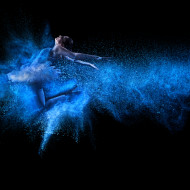When the dancer Rudolf Laban began to study work movement in British factories, two concerns predominated. The first was efficiency; the second was fatigue. By the 1940s, of course, there were laws governing the length of the workday and providing additional protection for the health and safety of workers. Nevertheless, repetitive activity of any sort is tiring. Human beings are not machines. We cannot repeat any motion endlessly without the need for variation.
In turning his dancer’s eyes to repetitive labor, Laban identified a basic rhythm. … Read More






